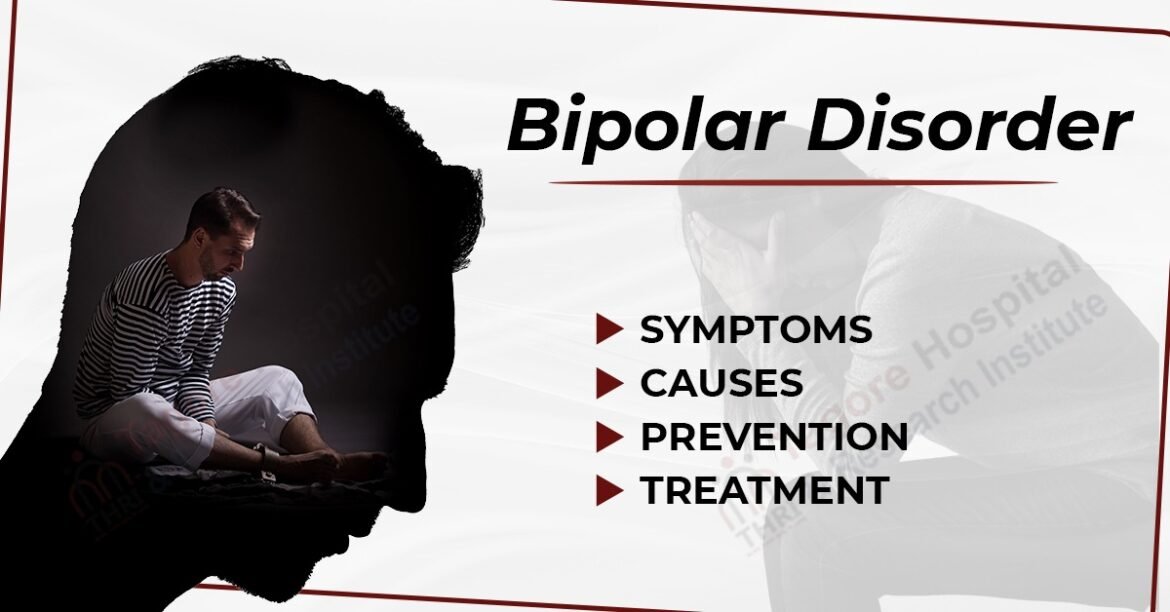Introduction
Bipolar disorder is a mental health condition characterized by extreme mood swings, including emotional highs (mania or hypomania) and lows (depression). Understanding the types, treatment options, and strategies for managing mood swings is essential for patients and families affected by this condition.
Types of Bipolar Disorder
1. Bipolar I Disorder
-
Defined by at least one manic episode, which may be preceded or followed by depressive episodes.
-
Mania includes elevated mood, increased energy, impulsive behavior, and sometimes psychosis.
2. Bipolar II Disorder
-
Characterized by depressive episodes and hypomanic episodes (less severe than full mania).
-
Individuals rarely experience full manic episodes but still face significant functional impairment.
3. Cyclothymic Disorder
-
Chronic, mild mood swings lasting at least two years.
-
Symptoms do not meet full criteria for bipolar I or II but can affect daily functioning.
4. Other Specified or Unspecified Bipolar Disorders
-
Mood symptoms that do not fit the strict definitions of the above types but still cause distress or impairment.
Symptoms to Watch For
Manic/Hypomanic Episode Symptoms
-
Elevated or irritable mood
-
Inflated self-esteem or grandiosity
-
Decreased need for sleep
-
Racing thoughts and rapid speech
-
Risky behaviors or poor judgment
Depressive Episode Symptoms
-
Persistent sadness or hopelessness
-
Loss of interest in activities
-
Fatigue or low energy
-
Difficulty concentrating
-
Changes in sleep or appetite
Treatment Options
1. Medication
-
Mood stabilizers (e.g., lithium) to prevent swings
-
Antipsychotics for mania or psychotic features
-
Antidepressants for depressive episodes, used cautiously
2. Psychotherapy
-
Cognitive-behavioral therapy (CBT)
-
Family-focused therapy to improve communication and support
-
Psychoeducation to recognize early warning signs of mood changes
3. Lifestyle Management
-
Maintaining consistent sleep patterns
-
Regular exercise and healthy diet
-
Stress reduction and relaxation techniques
-
Avoiding alcohol and recreational drugs
4. Monitoring and Support
-
Keeping a mood diary to track changes
-
Regular psychiatric follow-ups
-
Support groups for patients and families
Managing Mood Swings
-
Early recognition of triggers (stress, sleep disruption, substance use)
-
Developing a crisis plan with your psychiatrist
-
Practicing grounding techniques during mania or depressive episodes
-
Engaging supportive friends or family for accountability
Conclusion
Bipolar disorder is a lifelong condition, but with proper treatment and lifestyle adjustments, individuals can manage symptoms effectively. Education, self-awareness, and professional support are crucial for maintaining stability and improving quality of life.
FAQs
Q1: Can bipolar disorder be cured?
No, but symptoms can be managed effectively with treatment.
Q2: How long does treatment last?
Bipolar disorder typically requires long-term management, sometimes lifelong.
Q3: Can lifestyle changes help?
Yes, consistent routines, sleep, exercise, and stress management significantly improve stability.
Q4: Are medications enough to manage bipolar disorder?
Medication is essential, but therapy and support are equally important.
Q5: Can bipolar disorder affect relationships?
Yes, mood swings can strain relationships, which is why education and family involvement are critical.
